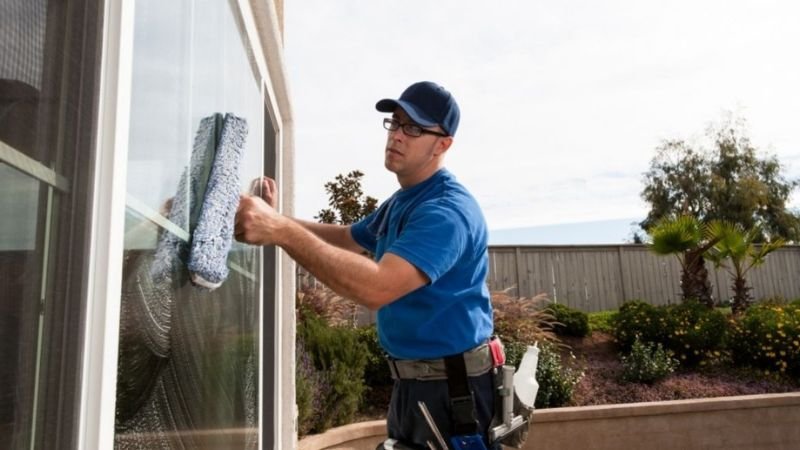Keeping your window screens clean not only enhances the overall appearance of your home but also ensures fresh, unpolluted air flows inside. Dirty screens can block light, harbor allergens, and diminish the efficiency of your windows. Fortunately, with the right approach, you can clean your window screens like a pro, restoring their clarity and extending their lifespan.
In this guide, we’ll share 9 Ways to Clean Window Screens Like a Pro to help you achieve spotless, well-maintained screens effortlessly. Whether you’re dealing with stubborn grime or just a light layer of dust, these techniques will make the task straightforward and manageable. From simple household items to advanced cleaning tools, we’ve covered every method you need to know. Get ready to transform your dirty window screens into sparkling clean ones, enhancing both the look and functionality of your windows.
9 Ways to Clean Window Screens Like a Pro
1. Gather Your Supplies
Before you begin cleaning, gather all necessary supplies. Start with a vacuum cleaner equipped with a soft brush attachment to effectively remove loose dirt and cobwebs from the screens. Prepare a bucket filled with warm water and a small amount of mild dish soap, which is gentle enough not to harm the screen material. Have microfiber cloths or soft sponges on hand for scrubbing, as well as a garden hose or access to a bathtub for rinsing larger screens.
2. Remove Screens Carefully
Handle each screen with care to avoid bending or damaging the frames. Lay them flat on a clean surface covered with a soft towel or sheet to prevent scratches. If you’re dealing with multiple screens, take note of their original positions to facilitate easier reinstallation later. This step ensures that screens remain intact and undamaged throughout the cleaning process.
3. Vacuum Away Dust and Debris
Use the soft brush attachment on your vacuum cleaner to gently remove dirt, dust, and cobwebs from both sides of the screens. Observe the edges, corners, and cracks where debris tends to collect closely. Vacuuming beforehand helps loosen surface-level grime, making the subsequent cleaning process more effective and efficient.
4. Prepare a Cleaning Solution
Pour some warm water into a bucket and stir in a tiny bit of dish soap. Gently stir the mixture until all of the soap has dissolved. Avoid using harsh chemicals or cleaners that could potentially damage the screen material. A mild soap solution is sufficient to break down grease and dirt without compromising the integrity of the screens.
Also Read: 9 Best Window Washing Techniques For Streak-Free Glass
5. Scrub Screens Gently
Dip a microfiber cloth or soft sponge into the soapy water solution. Begin scrubbing the screens in gentle, circular motions, focusing on areas with stubborn dirt or stains. Take care not to apply excessive pressure, especially on delicate screens, to prevent tears or damage to the mesh. The gentle scrubbing action helps to lift and dissolve dirt effectively without causing unnecessary wear and tear.
6. Rinse Thoroughly
Rinse every screen well with clean water after scrubbing. Use a garden hose or place smaller screens under a bathtub showerhead for adequate rinsing. Ensure all traces of soap residue are completely washed away to prevent streaks and buildup. Thorough rinsing is essential to achieving clean, clear screens that enhance visibility and maintain their aesthetic appeal.
7. Air Dry or Towel Dry
Shake off excess water from the screens after rinsing. Allow them to air dry outdoors in a shaded area to prevent direct sunlight from causing streaks or water spots. Alternatively, use a clean, lint-free towel to gently blot the screens dry. Proper drying prevents watermarks and ensures that screens remain pristine and ready for reinstallation.
8. Inspect and Reinstall
Inspect each screen carefully for any remaining dirt, spots, or streaks. If necessary, repeat the cleaning process to achieve a thorough clean. Once satisfied with the results, proceed to reinstall the screens back into their respective window frames. Ensure each screen fits snugly and securely to maintain proper functionality and aesthetic appeal.
9. Regular Maintenance
Maintain clean window screens by incorporating regular maintenance practices. Schedule monthly vacuuming sessions to remove dust and debris from the screens. Additionally, wipe down screens with a damp cloth in between deep cleanings to keep them looking fresh and extend their lifespan. Consistent maintenance preserves the cleanliness and functionality of window screens, ensuring they remain an effective barrier against outdoor elements while enhancing the overall appearance of your home.
Conclusion
It’s not necessary to find window screen cleaning to be an intimidating chore. By following these 9 pro tips, you can keep your screens in top condition, ensuring clear views and clean air for your home. Regular maintenance not only saves you time and effort in the long run but also helps extend the life of your screens. So, next time your screens need a refresh, remember these techniques and enjoy the benefits of clean, well-maintained window screens. Happy cleaning!
FAQs
What household items can I use to clean window screens?
You can use items like a soft brush, mild soap, and a vacuum cleaner to effectively clean your window screens.
How often should I clean my window screens?
It’s recommended to clean your window screens at least twice a year, or more frequently if you live in a dusty or pollen-rich environment.



